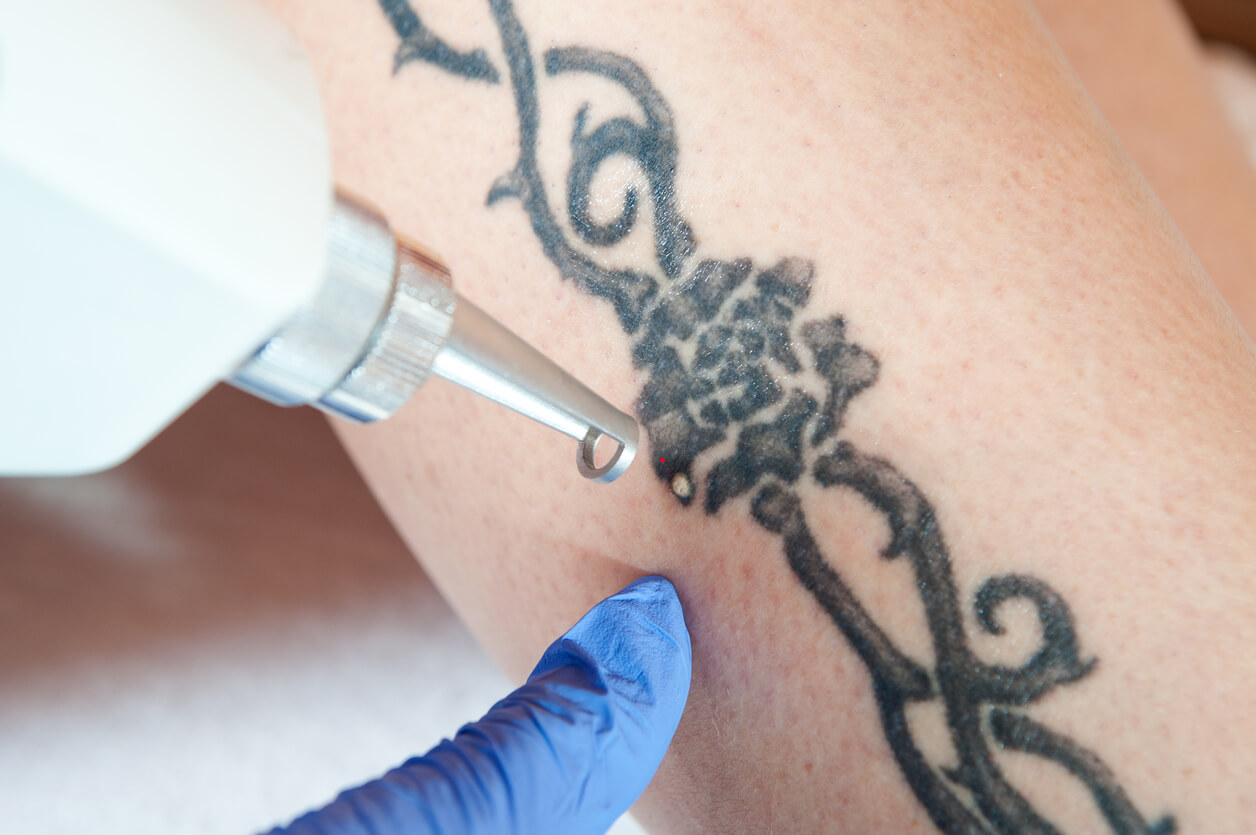Tattoo removal
With laser technology it’s possible to remove tattoos. This goes for black and blue ink, but also any other color which can be used in tattoos. The number of treatments varies between 4 to 6 treatments, although the colors used in the tattoo are also an indication for how many treatments are needed. The darker the ink, the more contrast with the skin tone, which means the treatment will be more effective. Colors that are closer to the skin tone, like yellow & orange, have less contrast to the skin tone and need more treatments.
Tattoo removal is performed with the Q-switched ND:YAG laser. This laser is effective in destroying the ink of the tattoo and protective to the skin’s pigment. This laser is also friendly in use, which makes it possible to treat a large surface in a short period of time.
The light produced by the laser is absorbed by the ink of the tattoo, which causes the ink to break down. During the treatment a ‘ tick’ is noticeable whenever the laser pulsates. This is a stinging sensation and is received as uncomfortable. During every treatment the whole tattoo can be treated, when it requires a regular size.
Directly after the treatment the skin will be red and swollen. After the treatment an anti-inflammation cream will be applied to the skin. We also advice to keep cooling the skin in the hours after the treatment, which will take the swelling and uncomfortable feeling down. Due tot the treatment a superficial wound was formed which will produce a crust. The wound will heal in approximately 7 to 10 days.
It’s important for the crust on the tattoo to stay intact, so scratching is prohibited. Also bathing and swimming can cause the crust to come off, so this needs to be handled carefully. Showering has to be done with care, whereby the tattoo is being avoided by the shower head. Above mentioned can influence the pigment development of the tattoo, which can result in pigmented lesions
Exercise is permitted, but with care, like mentioned above.
The tattoo needs to be protected from the sun. When this is inevitable the tattoo needs to be protected with sun protection factor 30. Which needs to be repeated every 2 hours.
Keep the skin clean and dry.
Before a treatment can be performed the tattoo needs to be assessed. The skin therapist will explain the treatment and answer all your questions. Furthermore, pictures will be taken, which will serve as comparison material. This way, it’s easy to see how much progression has been established.
The next treatment can be scheduled in 8 weeks. Meanwhile the tattoo is recovering from the past treatment and is breaking down the ink of the tattoo.

